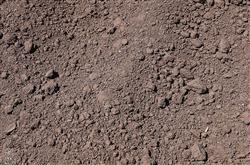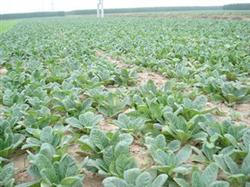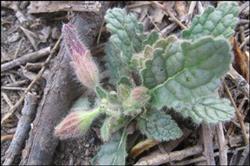Cultivation of Rehmannia glutinosa: how to manage it well?

How to manage Rehmannia glutinosa? What are the ways? Please give a detailed description of the method of Rehmannia glutinosa cultivation can be managed with reference to the following methods: 1. The choice of planting land of Rehmannia glutinosa: Rehmannia glutinosa should be selected with deep, fertile and well-drained sandy loam. Rehmannia glutinosa is not suitable for continuous cropping, turning the soil more than 25 cm deep in the first winter or early spring, applying base fertilizer, watering through water, spraying new high-fat film, can preserve moisture and moisture evaporation, sun and drought resistance, heat preservation and freezing, soil layer hardening, suffocation and isolation of disease and insect sources. 2. Seedling selection of Rehmannia glutinosa: generally cultivated Rehmannia glutinosa uses rhizome as propagation material. When selecting seeds, we should try to use inverted "planting", then cut it into segments of 3mur6 cm long, leaving two to three bud holes in each section. The incisions should be stained with plant ash, and the seeds should be planted after slightly drying. At the same time, "planting" should remove the "old mother and son", that is, the seeds planted in the first ten days. Spraying new high-fat film on plant surface can prevent bacterial infection, resist natural disasters, improve the intensity of photosynthesis and protect the growth of grain seedlings. 3. Daily field management of Rehmannia glutinosa seedlings: when the seedlings are 10-12 cm high, start the seedlings and leave 1 strong seedling in each hole. If there is a lack of plants, they should be replanted in time in cloudy days, and the seedlings should be raised with soil when replanting, so that the survival rate is higher. Weeding in the field of Rehmannia glutinosa: the rhizome of Rehmannia glutinosa is shallowly buried in the soil, and the middle tillage should be shallow to avoid root damage. The weeds around the seedlings should be pulled out by hand. After the plants are closed, the middle tillage should be stopped. Topdressing, Rehmannia glutinosa like fertilizer, in addition to sufficient base fertilizer, reasonable fertilization per mu after interseedling. Rehmannia glutinosa needs a large amount of water in the early stage, so it should be watered frequently, and in the later stage, the underground rhizome is expanded, with a small amount of watering. 4. prevention of diseases and insect pests: the main diseases of Rehmannia glutinosa are spot blight, ring disease and Fusarium wilt, which generally begin to occur in the first ten days of May and serious from June to July, so we should pay attention to timely prevention and control; pests include red spiders, ground tigers, grubs and so on. These are treated according to conventional methods to avoid the use of highly toxic pesticides. Click to get more planting techniques of Rehmannia glutinosa
- Prev

Planting Rehmannia glutinosa: how to manage the growing period of Rehmannia glutinosa?
How to manage the growing period of Rehmannia glutinosa? Please give a detailed introduction to the following methods for the management of Rehmannia glutinosa growing period: 1. Rehmannia glutinosa field weeding: Rehmannia glutinosa has entered the growing period with rapid root development, so it is necessary to strengthen mid-tillage, promote deep root rooting, keep the soil loose, control plant overgrowth and prevent weeds from growing.
- Next

Rehmannia planting: how to manage Rehmannia glutinosa seedlings?
How to manage the seedling stage of Rehmannia glutinosa? What should I pay attention to? Please introduce the methods of Rehmannia glutinosa seedling stage management can refer to the following methods: 1. Weeding in intertillage: from the end of April to the beginning of May, the management should focus on weeding. During this period of emergence of Rehmannia glutinosa, weeds in the field should be removed in time to prevent weeds.
Related
- Fuxing push coffee new agricultural production and marketing class: lack of small-scale processing plants
- Jujube rice field leisure farm deep ploughing Yilan for five years to create a space for organic food and play
- Nongyu Farm-A trial of organic papaya for brave women with advanced technology
- Four points for attention in the prevention and control of diseases and insect pests of edible fungi
- How to add nutrient solution to Edible Fungi
- Is there any good way to control edible fungus mites?
- Open Inoculation Technology of Edible Fungi
- Is there any clever way to use fertilizer for edible fungus in winter?
- What agents are used to kill the pathogens of edible fungi in the mushroom shed?
- Rapid drying of Edible Fungi

